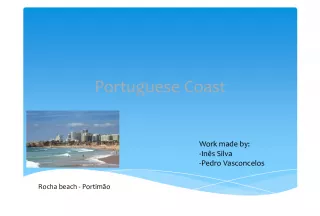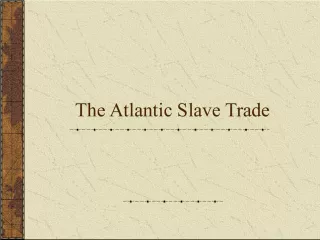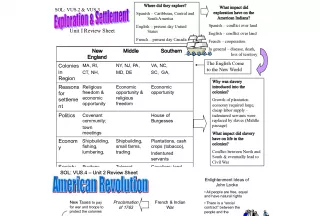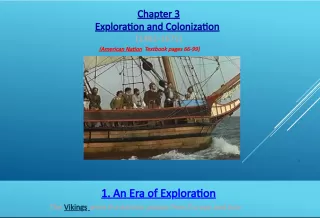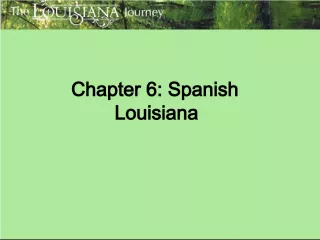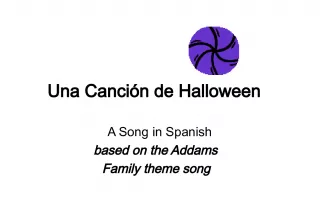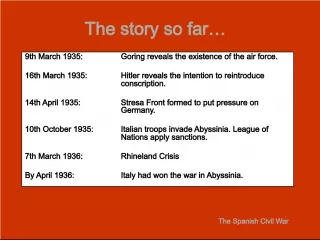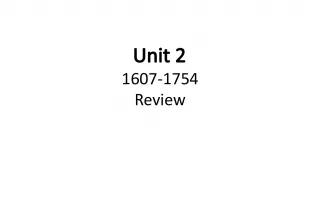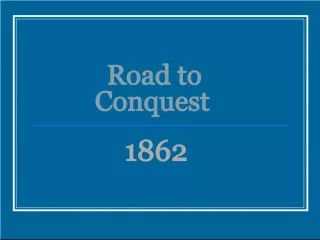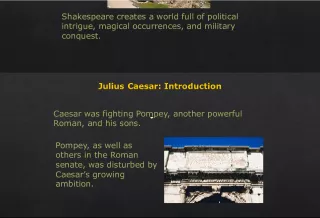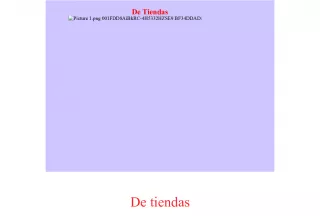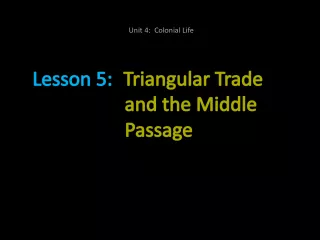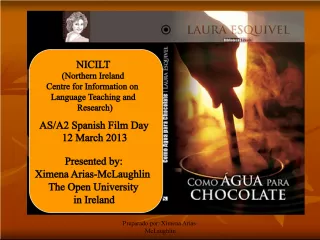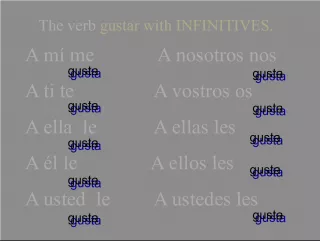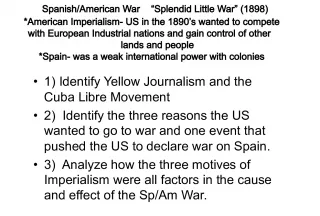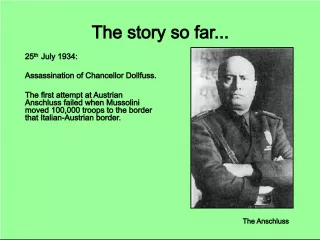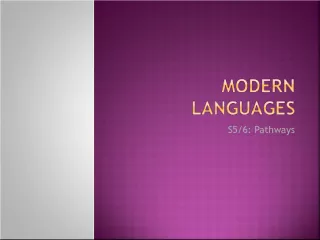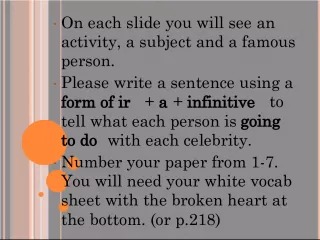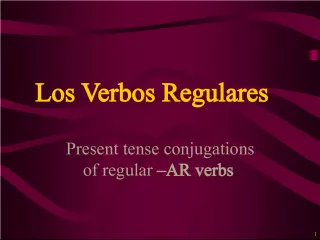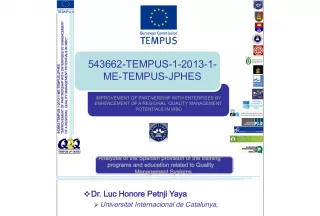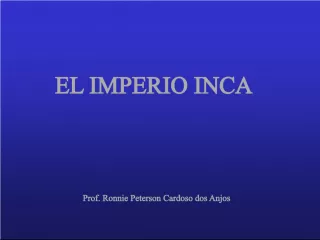Spanish & Portuguese Conquest in the Americas
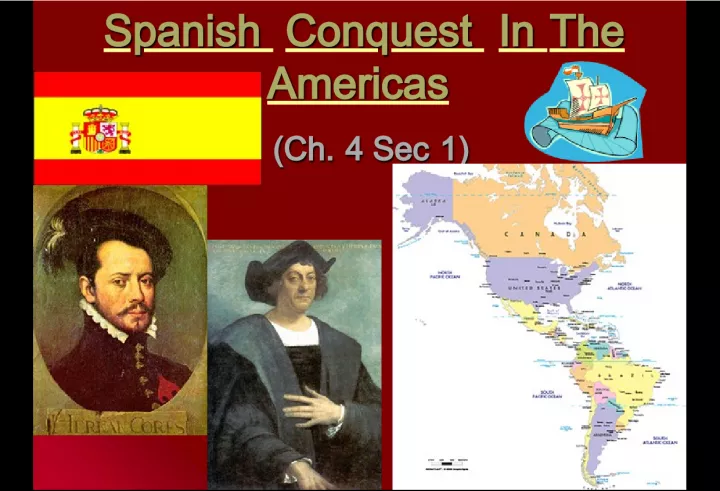

This article explores the conquests made by Spain and Portugal in the Americas during the colonial period. Covering notable events such as the conquistadors, the enslavement of natives and the establishment of colonial governments.
- Uploaded on | 7 Views
-
 bessie
bessie
About Spanish & Portuguese Conquest in the Americas
PowerPoint presentation about 'Spanish & Portuguese Conquest in the Americas'. This presentation describes the topic on This article explores the conquests made by Spain and Portugal in the Americas during the colonial period. Covering notable events such as the conquistadors, the enslavement of natives and the establishment of colonial governments.. The key topics included in this slideshow are . Download this presentation absolutely free.
Presentation Transcript
1. Spanish Conquest In The Americas Spanish Conquest In The Americas (Ch. 4 Sec 1) (Ch. 4 Sec 1)
2. Spain and Portugal Spain and Portugal These 2 Western European countries were the first to colonize the Americas ( The New World ) These 2 Western European countries were the first to colonize the Americas ( The New World )
3. Christopher Columbus Christopher Columbus
4. Christopher Columbus 1451-1506 Christopher Columbus 1451-1506 Was born in Genoa, Northern Italy Was born in Genoa, Northern Italy sailed for Spain 1492 in search of a western sea route to the Far East (China) sailed for Spain 1492 in search of a western sea route to the Far East (China) he never reached China, he reached the Caribbean he never reached China, he reached the Caribbean
5. Christopher Columbus Christopher Columbus ● The Caribbean ● The Caribbean Columbus really landed in the Bahamas Columbus really landed in the Bahamas Columbus claimed the island for Spain, called Columbus claimed the island for Spain, called it San Salvador “Holy Savior” it San Salvador “Holy Savior”
6. Tainos Tainos
7. Tainos Tainos Called Arawaks in English Called Arawaks in English These were the Native Americans in the Bahamas where Columbus first arrived These were the Native Americans in the Bahamas where Columbus first arrived He took each island in the Caribbean as a colony for Spain and searched them for gold He took each island in the Caribbean as a colony for Spain and searched them for gold Columbus/Spain began a process that turned all the lands of North/South America into European colonies Columbus/Spain began a process that turned all the lands of North/South America into European colonies
8. Other Explorers Take to the Seas Pedro Alvares Amerigo Vespucci Vasco Nunez de Balboa Ferdinand Magellan Hernando Cortes
9. Brazil Brazil 1500 Colonized by Pedro Alvares for Portugal 1500 Colonized by Pedro Alvares for Portugal
10. Portuguese in Brazil Portuguese in Brazil 1500 Pedro Alvarez conquers Brazil for Portugal 1500 Pedro Alvarez conquers Brazil for Portugal Brazil was only area in South America Brazil was only area in South America Spain did not control Spain did not control
11. Portuguese in Brazil Portuguese in Brazil
12. Portuguese in Brazil Portuguese in Brazil 1530’s Portuguese colonists settled Brazil’s coastal regions 1530’s Portuguese colonists settled Brazil’s coastal regions Portuguese grew sugar in Brazil Portuguese grew sugar in Brazil Portuguese enslaved Natives in Brazil and later Africans to work sugar plantations in Brazil Portuguese enslaved Natives in Brazil and later Africans to work sugar plantations in Brazil Portugal became very wealthy from Brazilian sugar Portugal became very wealthy from Brazilian sugar
13. Amerigo Vespucci Amerigo Vespucci Sailed the coast of South America for Portugal Sailed the coast of South America for Portugal first to proclaim a new world had been found first to proclaim a new world had been found ● 1507 German mapmaker named South America after ● 1507 German mapmaker named South America after Amerigo Vespucci Amerigo Vespucci
14. Vasco Nunez de Balboa Vasco Nunez de Balboa 1515 marched through Panama and claimed it for Spain 1515 marched through Panama and claimed it for Spain
15. Ferdinand Magellan Ferdinand Magellan 1519-1522 explored Guam , 1519-1522 explored Guam , conquered the Philippines for Spain conquered the Philippines for Spain (but he was Portuguese) (but he was Portuguese)
16. Ferdinand Magellan Ferdinand Magellan Magellan killed in the Philippines Magellan killed in the Philippines his crew claimed Guam and Philippines for Spain his crew claimed Guam and Philippines for Spain 18 of original 230 men made it back to Spain 1522 (3 years later): first men to circumnavigate the globe 18 of original 230 men made it back to Spain 1522 (3 years later): first men to circumnavigate the globe
17. Hernando Cortes Hernando Cortes
18. Hernando Cortes Hernando Cortes 1519 sailed for Spain to Mexico 1519 sailed for Spain to Mexico he marched inward to conquer new lands in Meso- America (Mexico and Central America) for Spain he marched inward to conquer new lands in Meso- America (Mexico and Central America) for Spain
19. Hernando Cortes Hernando Cortes Cortes learned of the wealthy Aztec Empire Cortes learned of the wealthy Aztec Empire
20. Aztecs Aztecs
21. Tenochitlan Tenochitlan Aztec Capital: modern-day Mexico City Aztec Capital: modern-day Mexico City Cortes and his 600 men reach Tenocitlan after four weeks of searching (1519) Cortes and his 600 men reach Tenocitlan after four weeks of searching (1519)
22. Tenochitlan Tenochitlan
23. Moctezuma II Moctezuma II Aztec Emperor when Cortes arrives (1519) Aztec Emperor when Cortes arrives (1519) Convinced Cortes was an Aztec God: Quetzalcoatl Convinced Cortes was an Aztec God: Quetzalcoatl
24. Moctezuma II Moctezuma II agreed to give Cortes a share of Aztec’s gold agreed to give Cortes a share of Aztec’s gold Cortes quickly enslaved and forced Aztecs into mines to dig up gold Cortes quickly enslaved and forced Aztecs into mines to dig up gold
25. Hernando Cortes Hernando Cortes 1520 Aztecs revolt and temporarily push Cortes out 1520 Aztecs revolt and temporarily push Cortes out
26. Hernando Cortes Hernando Cortes 1521 Cortes returns and reconquers Aztecs for Spain 1521 Cortes returns and reconquers Aztecs for Spain
27. Cortes’ 3 Advantages Cortes’ 3 Advantages able to convince other natives in the region to help him against Aztecs (they wanted revenge) able to convince other natives in the region to help him against Aztecs (they wanted revenge) Aztecs (and other natives) were defenseless against European diseases (measles, mumps, smallpox, typhus) Aztecs (and other natives) were defenseless against European diseases (measles, mumps, smallpox, typhus) Spaniards had cannons, muskets, horses Spaniards had cannons, muskets, horses
28. Francisco Pizarro Francisco Pizarro 1532 conquers parts of South America for Spain (modern day Ecuador and Peru ) 1532 conquers parts of South America for Spain (modern day Ecuador and Peru )
29. Inca Empire Inca Empire
30. Atahualpa Atahualpa Inca ruler (1532) Met Pizarro’s 200 men for battle Inca ruler (1532) Met Pizarro’s 200 men for battle
31. Atahualpa Atahualpa Atahualpa had 30,000 unarmed men Atahualpa had 30,000 unarmed men Spaniards crushed them with firearms and kidnapped Atahualpa Spaniards crushed them with firearms and kidnapped Atahualpa
32. Atahualpa Atahualpa promised Spaniards piles of gold and silver for his release promised Spaniards piles of gold and silver for his release The Inca delivered the gold/silver: The Inca delivered the gold/silver: Spaniards strangled Atahualpa in front of Incas after they got the ransom Spaniards strangled Atahualpa in front of Incas after they got the ransom
33. Atahualpa Atahualpa Incas were demoralized and surrendered Incas were demoralized and surrendered
34. Yucatans Mayas Yucatans Mayas 1542 conquered by Spaniards 1542 conquered by Spaniards 1697 Finally conquered by Spaniards 1697 Finally conquered by Spaniards
35. Spain Pushes North 1513 Juan Ponce de Leon explored Florida 1513 Juan Ponce de Leon explored Florida 1540 Francisco Coronado led an expedition through American Southwest 1540 Francisco Coronado led an expedition through American Southwest
36. Spain’s Empire 1700 Spain’s Empire 1700
37. Spain’s Pattern of Conquest Spain’s Pattern of Conquest Conquistadors : Spanish explorers that carved out colonies in Latin America in search of gold and silver Conquistadors : Spanish explorers that carved out colonies in Latin America in search of gold and silver Peninsulares Peninsulares : Spanish settlers were almost all men Forced marriage between Spanish settlers and native women was common Forced marriage between Spanish settlers and native women was common (Mestizo) this created a new mixed race of Spanish and Native American blood (Mestizo) Encomiendas : Spaniards forced Natives to ranch, farm, and mine for Spanish landlords Encomiendas : Spaniards forced Natives to ranch, farm, and mine for Spanish landlords
38. Forced Marriage Forced Marriage
39. Spain’s Pattern of Conquest Spain’s Pattern of Conquest Forced Conversion to Christianity Forced Conversion to Christianity ● Priests accompanied conquistadors on their expeditions ● Priests accompanied conquistadors on their expeditions to forcefully convert Natives to Catholicism to forcefully convert Natives to Catholicism
40. Forced Conversion Forced Conversion
41. Forced Conversion Forced Conversion
42. Santa Fe, New Mexico : Santa Fe, New Mexico : first Catholic mission in the U.S: missions became the headquarters for forced conversion of Natives to Catholicism first Catholic mission in the U.S: missions became the headquarters for forced conversion of Natives to Catholicism
43. Bartolome de Las Casas Bartolome de Las Casas a Catholic Priest a Catholic Priest spoke out against the harsh treatment of Natives on encomiendas spoke out against the harsh treatment of Natives on encomiendas first to suggest enslaving Africans for labor in the new world first to suggest enslaving Africans for labor in the new world some priests contributed to the abuse and loss of autonomy by the Native Americans some priests contributed to the abuse and loss of autonomy by the Native Americans
44. Rise of New World Slavery Rise of New World Slavery Africans had prior exposure to European diseases and did not die from them as much as Native Americans Africans had prior exposure to European diseases and did not die from them as much as Native Americans Spaniards, Portuguese, and British (later) all began using Africans as slave labor in the new world Spaniards, Portuguese, and British (later) all began using Africans as slave labor in the new world
45. Native Resistance Native Resistance 1493 Tainos on St. Croix revolted against Columbus with poison arrows 1493 Tainos on St. Croix revolted against Columbus with poison arrows Tainos revolted there again in 1495 before finally being subdued Tainos revolted there again in 1495 before finally being subdued
46. Native Resistance Native Resistance end of 1600’s Pueblos in New Mexico revolted against the Spanish end of 1600’s Pueblos in New Mexico revolted against the Spanish With forced conversion to Catholicism, priests burned Natives’ sacred objects and forbade their rituals With forced conversion to Catholicism, priests burned Natives’ sacred objects and forbade their rituals Those who practiced their own religion were beaten Those who practiced their own religion were beaten
47. Native Resistance Native Resistance 1680 Pop’e ( Pueblo ruler) led an uprising against the Spanish in New Mexico 1680 Pop’e ( Pueblo ruler) led an uprising against the Spanish in New Mexico
48. Native Resistance Native Resistance Pueblo Revolt Pueblo Revolt 17,000 warriors from all over New Mexico fought the Spanish 17,000 warriors from all over New Mexico fought the Spanish they pushed Spaniards back into Mexico for 12 years they pushed Spaniards back into Mexico for 12 years
49. Spain’s Influence Spain’s Influence Spain’s American colonies made it the richest most powerful nation in the world by the late 16th century Spain’s American colonies made it the richest most powerful nation in the world by the late 16th century Spain built a powerful navy and army to protect its colonies Spain built a powerful navy and army to protect its colonies
